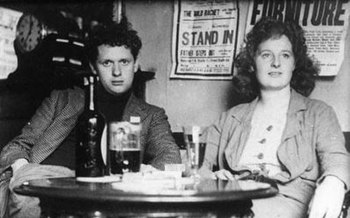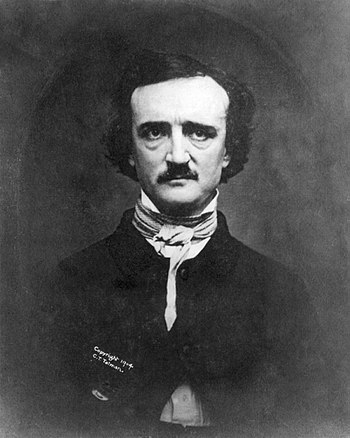How did you get started in rare books?
Well, I remember that old books fascinated me already as a child, but it was when I studied Latin at the university, specializing in Latin from the early modern period, that my real interest in this wonderful material grew. During my education in library and information science at Uppsala University (Sweden) cataloguing and early printed books were soon the two fields which I really wanted to explore further, and I have continued to do so ever since, in one way or another. Since I have a background as a researcher in neo-Latin, having defended my PhD thesis in Latin at the same university in 2007, I try to combine research and librarianship as much as possible. And the common denominator is rare books.
What is your role at your institution?
As a librarian at the Section for Early Printed Books and Special Collections in the old main building of Uppsala University Library, called Carolina Rediviva, my main responsibility is cataloguing of early printed books. This library has wonderful collections from all ages, so it is really a pleasure. But the work includes so many other things as well: to receive and to show the collections to visiting students and groups, to assist researchers, to arrange seminars, to write articles, etc.
Favorite rare book / ephemera that you've handled?
There is actually a gem among the books that I have been working with so far, which is my personal favorite, although it is of course impossible to select just one in reality. But the book I'm thinking of is a book of hours from 1515, printed in Paris on parchment. It used to belong to the order of the Barnabites in Paris, and was donated to our library in the 1960s by a private person. It contains a large amount of wonderfully charming illuminations made by hand. It is an excellent example from the period of transition from manuscript to print culture, and in addition a very beautiful one.
What do you personally collect?
I do not really collect books personally. I have some old ones, but I actually bought them only to use them as handbooks in my Latin research. They are still highly relevant from that point of view, although they were published in the 17th century.
What do you like to do outside of work?
For the moment I exercise and do sports in one way or another as much as I can. Running is the favorite. Rare books and running, that is a perfect combination.
What excites you about rare book librarianship?
It is the fact that you work with and hold history in your hands every day. I never get used to and tired of opening an old book and investigating what it contains, who has owned it, where it has travelled, etc. This is a quite extraordinary thing with our work, and something I try to convey to the visitors I meet at the library. Another thing is of course that rare book librarianship is such a wide field. It is interdisciplinary in its true sense, and presupposes knowledge and interest in subjects ranging from languages and history of all kinds to preservation and practical library management.
Thoughts on the future of special collections / rare book librarianship in Sweden?
In a time when more and more material is digitized, I think our mission is also to stress the importance of the physical objects and the actual copies that our libraries keep. Digitization is of course good and worth all efforts, from several points of view: access, preservation, etc. But when the actual texts are to a large extent available on the Internet, and when the same issues of early printed books have sometimes been digitized by several different institutions worldwide, the libraries still keep the physical copies. We should therefore more than previously try to investigate the contexts of the single copies, i.e. provenances, their history, annotations in hand, book bindings, etc., and pass the information on to the users in catalogue records and other ways.
More typical of rare book librarianship in Sweden is probably one aspect that we recently highlighted in a national seminar at out library. From the wars of the Swedish armies on the continent (especially Poland, Germany and Denmark) in the 17th century, there is in several Swedish libraries a substantial portion of books that were taken as war booty during these campaigns. The question is surely delicate, and not always so pleasant to deal with. Taking cultural objects as war booty is strictly against the international laws of our time, but in the 17th century it was actually allowed, following the principles established by Hugo Grotius. Sometimes restoration of material was also settled in peace treaties. But now when more than three hundred years have passed, we still have to deal with the matter in a way that is respectful to all parts. And here the new technology is extremely helpful. By increased possibilities to give access to material online, we could actually restore these collections to researchers in their countries of origin virtually, when physical restoration is no longer an alternative. To do so could be one of the main priorities for Swedish rare book librarians in the near future, I think.
Any unusual or interesting collection at your library you'd like to draw our attention to?
We have for example a Copernicana-collection, taken as war booty from Frombork (Frauenburg) in Poland in 1626, which contains books once owned by the famous Polish astronomer Nicolaus Copernicus. Another is the Bodoni-collection, which is the most important collection of printed material produced by the Giambattista Bodoni outside of Parma. In our manuscript department we have for example the Düben-collection, containing music manuscripts and printed items gathered by the Swede Gustav Düben, who was music director at the royal Swedish court in the 17th century. Among other things it contains a big portion of vocal music composed by Buxtehude.
Any upcoming exhibitions at your library?
Next year we will arrange two different exhibitions, both celebrating the anniversaries of important historical persons. The first, opening in May next year, will be on the anatomist Andreas Vesalius, who was born in 1514. The second, which will open in the autumn, will be on Aldus Manutius, who died in 1515.












